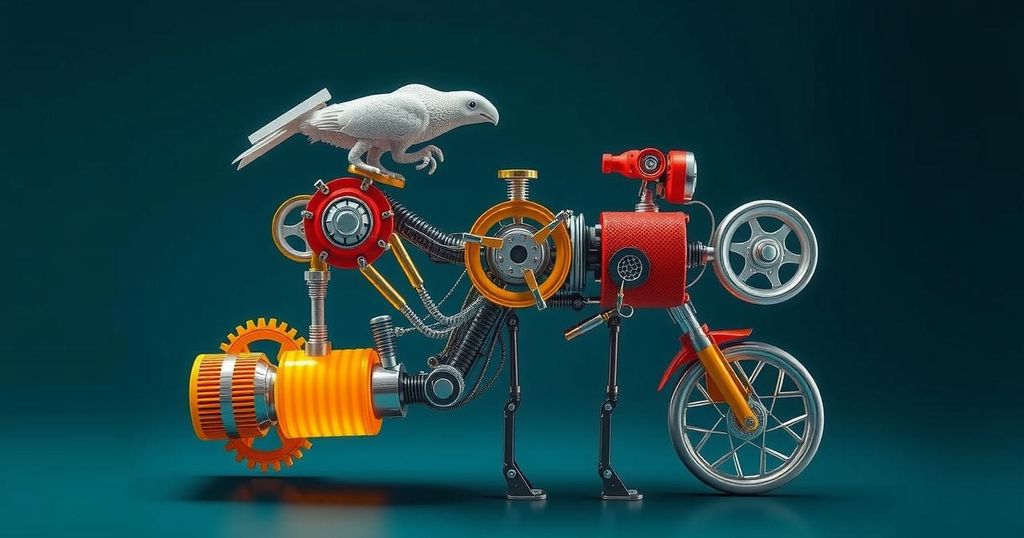This article details eleven significant inventions from Latin America, highlighting contributions in fields such as medicine, technology, and everyday tools. It discusses the challenges faced in research and development within the region but emphasizes the recent surge in innovative initiatives and start-ups aimed at fostering creativity. Key inventions include the colour television, artificial heart, and contraceptive pill, showcasing the enduring impact of Latin American inventors on global advancements.
Latin America, a region renowned for its creativity, has given rise to numerous significant inventions that have transformed various industries and aspects of daily life. Despite facing challenges in research and development, marked by limited investment, the potential for innovation is witnessing a resurgence. Emerging start-ups and creative entrepreneurs are striving to bridge the innovation gap, promising a brighter future. The remarkable legacy of inventions from this region includes the following: 1. Colour Television: Guillermo Gonzalez Camarena, an electrical engineer from Guadalajara, Mexico, invented the first colour television utilizing a colour-wheel mechanism. This groundbreaking device was patented in both the US and Mexico and continues to be utilized by NASA. 2. Neonatal Artificial Bubble: Claudio Castillón Lévano of Peru created the neonatal artificial bubble, enhancing medical care for high-risk newborns. 3. Contraceptive Pill: In 1956, Mexican chemist Luis E. Miramontes co-invented the first oral contraceptive pill, revolutionizing reproductive health. 4. Electric Brake: In 1907, Victor Ochoa patented the electric brake, which employs magnetic attraction to facilitate smoother braking for trains. He is also noted for several other inventions including an adjustable wrench. 5. Photography: The French-Brazilian inventor Hércules Florence developed a photographic process three years before the renowned Louis Daguerre, establishing himself as a pioneer in photography. 6. Mondragón Rifle: Designed by Manuel Mondragón, this innovative rifle allowed for automatic reloading, used notably during World War I and the Mexican Revolution. 7. Ballpoint Pen: László József Biró, an Argentinian journalist, invented the ballpoint pen using oil-based ink and a tungsten ball, enabling smoother writing. 8. Artificial Heart: Dr. Domingo Liotta from Argentina created the first artificial heart successfully transplanted into a human in 1969, with his invention now exhibited in the Smithsonian Museum. 9. Captcha Codes: The online verification codes we often encounter were invented by Guatemalan physician Luis Von Ahn, designed to block spam and verify user access. 10. Stent: Julio C. Palmaz, an Argentine vascular radiologist, invented the balloon expandable stent, instrumental in treating cardiovascular diseases. His contributions earned him a place in the National Inventors Hall of Fame in 2006. 11. Drug-Administering Bandage: Alejandro Zaffaroni of Uruguay holds over 45 patents, including a bandage that allows for drug administration through the skin.
The article highlights the innovative spirit of Latin America by showcasing eleven noteworthy inventions that originated from this region. Despite its rich history of invention, Latin America faces challenges in research and development, with sectors focusing more on natural resources rather than technology. The report notes a recent trend toward revitalizing innovation through start-ups and initiatives aimed at improving the region’s competitive edge in the global market. The featured inventions are milestones that represent the region’s contributions to both scientific advancement and daily life.
In conclusion, while Latin America has historically faced hurdles in research and innovation, the achievements highlighted in this article underscore the region’s capacity for significant technological contributions. From the invention of the colour television to the development of the artificial heart, these milestones reflect not only ingenuity but potential for future advancements. With emerging entrepreneurial efforts focused on bridging the innovation gap, Latin America’s inventive spirit may forge a path toward renewed growth and development in the coming years.
Original Source: www.weforum.org






